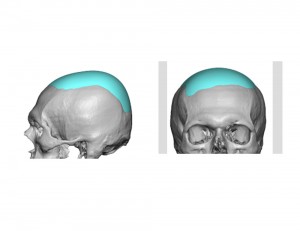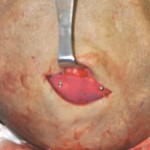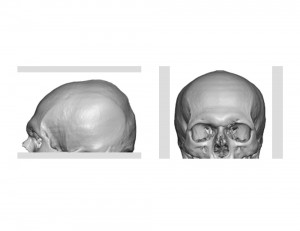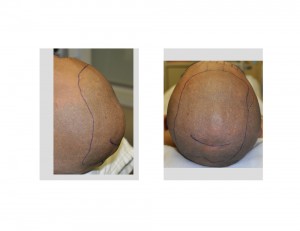Background: The shape of the skull can be almost as variable as each individual in many ways. But the one similar characteristic is that most skulls do have a smooth surface from the forehead to the back across the top. This is seen in many plain skull model examples where a smooth surface is usually evident.
But despite the depiction that a skull has a smooth surface, it does not always occur. For a variety of developmental reasons drive by sagittal suture and anterior and posterior fontanelle closure, the skull may develop a variety of surface irregularities. While across the top of the top of the skull the most common irregularity is a sagittal crest or ridge, generalized lumps and bumps may appear. The skull is otherwise of normal thickness but it just isn’t smooth.
While there are undoubtably many people who do not have a perfectly smooth skull to the touch, the presence of hair provides a visual camouflage of it and makes it tolerable. But in the male who shaves his head or lacks hair coverage, the skull irregularities can be quite visible and aesthetically distressing.


A skull cap implant is a slightly different skull augmentation implant in that it is designed to create a smoother skull but not necessarily a larger or more augmented one. Because it is a thin implant (in this case 6mm maximal projection at highest point) it can be inserted through a relatively small scalp incision. Because it is placed partially folded it is critical that one makes sure that the edges of the implant are laying completely flat prior to closure. Thin implant edges can easily remain folded and are hard to detect by feel and impossible to see through a limited scalp incision.
Case Highlights:
1) The normally smooth surface of the skull can in some people be very lumpy which can be visible in the bald or shaved head male.
2) A thin custom made skull implant placed over the lumpy part of the skull can create a smoother scalp surface and feel.
3) A thin custom made skull cap implant can be placed through a relatively small scalp incision.
Dr. Barry Eppley
Indianapolis, Indiana





